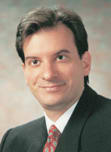The Path to Paperless
10 Rules for Basic EMR Implementation
Part 2: presenting the last five “commandments.”
By Peter J. Polack, MD, FACS

Last month, I presented to readers the first five of the 10 “commandments” for successful EMR implementation as developed by our practice administrator, Don Cushing MEd, MBA, who has years of experience with EMR adoption. This month, I will offer the last five of his rules. But first, a very brief review of commandments one through five.
The first five commandments mandate that you should (1) begin with a plan for EMR implementation that is relevant, realistic and measurable. Part of that plan (2) is that the hardware and software have to be adequate to meet your needs, both in capacity and in functionality.
In addition, (3) your work processes have to be fine-tuned for efficiency or else the EMR will magnify their flaws. You must recognize that EMR implementation is a process that requires continued feedback and improvement. Making detailed flow charts (4) designed for efficiency will enable your EMR to function to maximum advantage.
Finally, (5) when an EMR system is functioning at an optimal level, the exam room should serve as the command center, with simple clicks from the EMR system being all that is needed to document all tests and instructions.
Following are the last five rules for EMR implementation:
6. Thou Shalt Know What an EMR Is
A common cause of EMR project failure is the lack of physician buy-in. They see it as just a digital version of a paper chart. But a paper record does not have the ability to cull clinical information and transform it into actionable data, nor does it allow for enhanced communication, such as sending tasks and reminders instantaneously to multiple users. Physicians who balk at EMR need to learn its advantages.
7. Thou Shalt Not Confuse Templates and Documents
Templates are the data-entry forms of an EMR system and what most users see. The documents are the forms that are generated from the templates and what constitute the official medical record. Customization of the templates is not as important as the documents, which are potentially subject to the scrutiny of an outside auditor.
8. Thou Shalt Consider the Inputs in Terms of the Outputs
It's easy to get bogged down in detail regarding what minutiae needs to be included in a document. Who is the reader, an associate in your group or a referring doctor? What pertinent information is needed? Long-form exam or brief clinical summary? Everything else is probably extraneous.
9. Thou Shalt Not Use Templates Out of the Box
In general, the easier an EMR system is to use out of the box, the less flexible it will be. This may not be as critical to a new or solo practitioner who can more easily adapt processes to the software. But for most practices, it's like trying to fit a square peg in a round hole. If a prospective EMR does not have customizable templates, keep shopping. If they are customizable, figure out a way to make them fit the way you practice medicine.
10. Thou Shalt Not Confuse Paperless With Paper-Appropriate
Some practices are so intent upon becoming paperless that they actually throw logic out the window. Drawings and signatures do not need to be mined for analysis. Rather than spend a lot of money on an expensive tablet and software that allows patients to sign forms electronically, why not just have them sign a paper and scan it? The practice has what it needs and the patient keeps the paper copy – everyone's happy. OM
| In a multipart series, Dr. Polack is describing how an 11-physician practice, Ocala Eye in Ocala, Fla., with five locations and 140 employ ees, makes the major transition from paper medical records to EMR. During the course of the series, Dr. Polack will provide readers with a “real-time” look at how the implementation is progressing. Dr. Polack can be reached at ppolack@ocalaeye.com. |

|
Peter J. Polack, MD, FACS, is co-managing partner for Ocala Eye, a multisubspecialty ophthalmology practice located in Ocala, Fla. He is also founder of Emedikon, an online practice management resource for physicians and administrators. |








